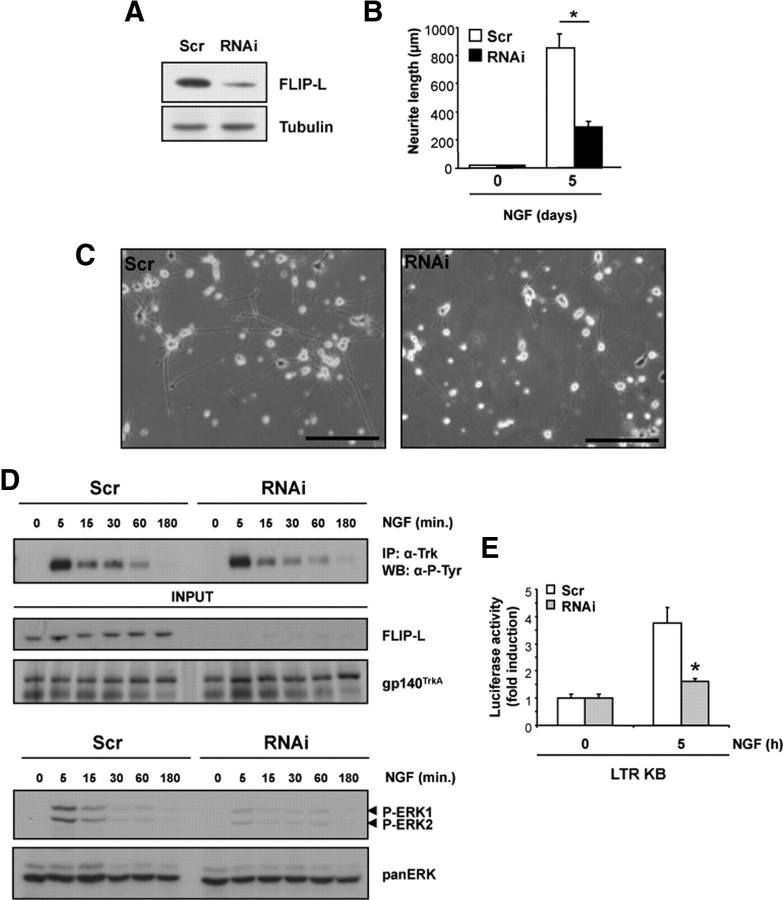Figure 7.
A, PC12 cells were infected with lentiviral particles containing the sequence of an RNAi against FLIP-L (RNAi) or a scrambled sequence (Scr). After 3 d, total extracts were probed with anti-FLIP (Dave-2) antibody by Western blot, and the membrane was reprobed with anti-tubulin as a loading control. B, PC12 cells infected with FLIP-L RNAi or scrambled (Scr) lentiviral particles were incubated or not with 100 ng/ml NGF for 5 d, and total neurite length was measured. Significant differences are indicated (*p < 0.001, t test). C, Representative images of NGF-induced differentiation of PC12 cells as described in B after 5 d of treatment are shown. Scale bars, 100 μm. D, After 3 d of PC12 infection with lentiviral particles containing the sequence of the RNAi against FLIP-L or a scrambled sequence (Scr), cells were serum starved for 12 h, then stimulated with 100 ng/ml NGF for the indicated times. Protein (250 μg) was immunoprecipitated using the anti-pan-Trk (α-203) antibody, and the membrane was blotted with the anti-phospho-Tyr (4G10) antibody. As input controls, lysates were blotted with anti-FLIP (Dave-2) to ensure efficient knockdown and anti-TrkA. Lysates from the same experiment were analyzed by Western blot (WB) to assess the phosphorylation of ERK1/2. The membrane was stripped and reprobed with an anti-pan-ERK antibody to control protein loading. E, After 2 d of infection with lentiviruses containing FLIP-L RNAi or scrambled sequences, PC12 cells were plated in adequate plates and transfected with an NF-κB-dependent reporter vector (LTR KB). After 24 h, cells were serum starved for 12 h, then stimulated for 5 h with 100 ng/ml NGF. Luciferase activity was measured in the cell lysates using a Luciferase Assay System (Promega). Significant differences are indicated (*p < 0.05, t test).

